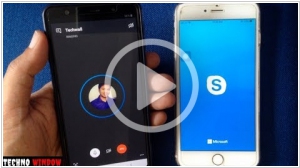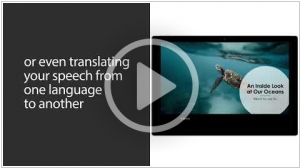Skype vs Telegram
May 17, 2023 | Author: Adam Levine
28

Skype is a software application that allows users to make voice and video calls and chats over the Internet. Calls to other users within the Skype service are free, while calls to both traditional landline telephones and mobile phones can be made for a fee using a debit-based user account system. Skype has also become popular for its additional features which include instant messaging, file transfer, and videoconferencing. Skype alternative for enterprise is called Skype for Business.
17

Telegram is a messaging app with a focus on speed and security. It’s super-fast, simple, secure and free. Telegram seamlessly syncs across all of your devices and can be used on desktops, tablets and phones alike. You can send an unlimited amount of messages, photos, videos and files of any type (.doc, .zip, .pdf, etc.). Telegram groups have up to 200 people and you can send broadcasts to up to 100 contacts at a time. Be sure to check our website for a list of Telegram apps for all platforms.
Skype and Telegram are both popular communication platforms, but they offer different features and serve different purposes. Skype is a widely recognized application that specializes in voice and video calling. It provides high-quality audio and video communication, along with features like messaging, screen sharing, and conference calls. Skype is known for its reliability and compatibility across various devices and operating systems. On the other hand, Telegram is a feature-rich messaging app that focuses on secure and private communication. It offers features like end-to-end encryption, self-destructing messages, file sharing, and group chats. Telegram also allows users to create channels and broadcast messages to a large audience. It is known for its speed, security, and user-friendly interface.
See also: Top 10 Business Messaging platforms
See also: Top 10 Business Messaging platforms
Skype vs Telegram in our news:
2024. Telegram launches Business accounts
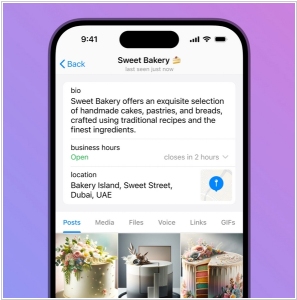
Telegram is gearing up to compete against Meta's WhatsApp and Messenger by unveiling a suite of new features tailored for businesses, alongside support for ad-revenue sharing. Launched recently following an initial announcement, Telegram Business introduces various options such as personalized start pages, the ability to establish business hours, preset replies, greetings, and automated away messages, as well as chatbots and chat tags. This move is expected to further bolster Telegram's Premium service, providing accessible tools and features for business users without the need for coding knowledge. Notably, businesses can now showcase their operating hours and location on a map, and initiate conversations with customers through customized start pages, offering text and sticker options. Similar to WhatsApp, Telegram Business also includes "quick replies" enabling users to access formatted preset messages containing links, media, stickers, and files.
2022. Telegram is now offering a Premium subscription
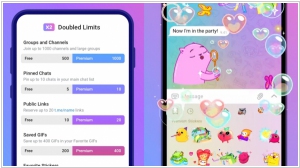
Telegram is introducing a Premium subscription to leverage its significant growth. Priced at $5 per month, Telegram Premium offers a range of additional features alongside the existing free functionalities. Subscribers can now enjoy the ability to upload larger files, with a size limit of up to 4GB, as well as accelerated file downloads. Furthermore, the subscription doubles various limits within the app, such as the ability to follow up to 1,000 channels, create 20 chat folders with 200 chats each, pin 10 chats, save 10 favorite stickers, and add a fourth account to the app. Premium users also gain access to exclusive stickers, including those with full-screen animations, unique reaction emojis, premium badges, and voice-to-text conversation capabilities.
2021. Telegram added group video chat and screen-sharing
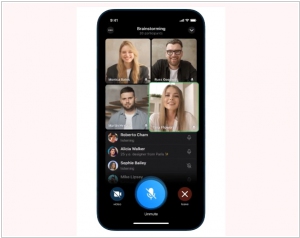
Telegram has introduced a new feature that allows users to engage in video chats with up to 30 people. This functionality is integrated into the Voice Chat feature of the app. When initiating a voice chat room, you will now notice a camera icon, which, when tapped, enables your video feed. Similar to other video conferencing applications like Zoom and Google Meet, Telegram allows you to expand the video to fullscreen and pin a specific participant to the center of the call. This ensures that the focus remains on the pinned individual even when others join the chat. Furthermore, Telegram now supports screen sharing. While on a video call, you have the flexibility to switch between your camera feed and the content displayed on your screen or even show both simultaneously.
2020. Skype has a Zoom-like video call function called 'Meet Now'
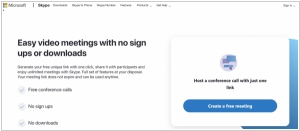
Skype made a notable comeback by reminding the world about its presence through a tweet. Surprisingly, Skype offers a video chat feature similar to Zoom, known as Meet Now, which doesn't necessitate having a Skype account or the app. With Skype Meet Now, users can generate a meeting URL to share with participants. While it is user-friendly on the web-based client, selecting the option to open the meeting in the Skype app may encounter issues. This brings us to the observation that Skype seems to have missed out on the surge in popularity of video calling platforms.
2019. Skype added features for work with important messages
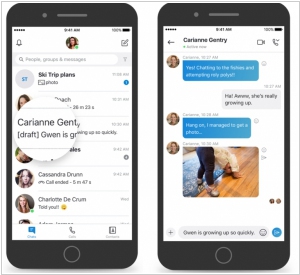
Skype primarily serves as a platform for video communication, but it also aims to establish itself as a versatile messaging application. While competing with established players like WhatsApp and Viber may seem challenging, Skype is exploring new opportunities. In its latest update, the developers introduced some unconventional features for a messaging app: drafts and bookmarks. Drafts enable users to save partially composed messages, allowing them to return to them later and complete them. Bookmarks, on the other hand, allow users to save received messages for quick retrieval at a later time. These features specifically target important messages, suggesting that Skype may be seeking to carve out a new niche that falls between traditional messengers and email. Such functionality could prove valuable for business users.
2019. Skype launched screen sharing on iOS and Android
Skype has recently announced an update to its mobile application, introducing a screen sharing feature for both iOS and Android users during calls. This functionality offers various practical applications, such as sharing presentations or providing remote technical assistance. To access this feature, Skype users can simply tap the newly added "..." (more) menu within the app, where other recently launched features like call recording and subtitles can also be found. Additionally, this mobile release of Skype includes a redesigned calling screen that enables users to dismiss call controls with a single tap. Tapping again removes all controls, allowing the video call itself to take center stage, while another tap brings back all the controls.
2019. Telegram now allows to kill chat history
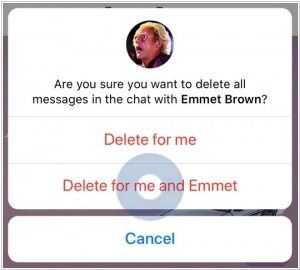
Telegram has introduced a new feature that enables users to delete messages in one-to-one and/or group private chats retrospectively, extending beyond their own inbox. With this feature, users have the ability to selectively delete their own messages as well as messages sent by others in the chat. To delete a message from both ends, users simply need to tap on the message, choose the 'delete' option, and then they are presented with two choices: 'delete for [the name of the other person in the chat or 'everyone']' or 'delete for me'. Opting for the former option removes the message across all devices, while the latter option only removes it from the user's own inbox. This feature grants users greater control over their conversations and ensures privacy and discretion when needed.
2019. Skype can now blur the background during video calls

Skype has introduced a new feature that is likely to enhance its appeal to users. This feature is the screen-blurring functionality, designed to conceal any untidy or unwanted background details during a call. It allows users to hide their messy rooms or other elements they prefer not to display to the other party on the call. Skype stated that this feature utilizes artificial intelligence to maintain the caller as the main focus, similar to the blurring feature added to Microsoft Teams in the previous year. Moreover, it can detect features such as hair, hands, and arms. The feature is gradually being rolled out to Skype for desktop, web, and mobile platforms, although it may not be compatible with all devices at present. Users can enable it either in Skype's settings or by accessing the video call button within the service.
2018. Skype and PowerPoint got real-time subtitles
PowerPoint and Skype have announced the upcoming introduction of real-time captions and subtitles in 2019. This new feature is designed to provide accessibility for individuals who are deaf or hard of hearing, enabling them to read the spoken words during PowerPoint presentations or video calls on Skype. Moreover, the subtitles offer the capability to include presentation translations. The live captions and subtitles will support 12 spoken languages and display on-screen in over 60 different languages. Presenters will have the ability to customize the appearance of the subtitles to align with their presentation's visual style, and the speech recognition technology will adapt to provide more accurate terminology based on the context. In Skype, the subtitles will be available during one-to-one video calls and will automatically scroll on the screen. Microsoft has also mentioned that they are working on providing additional viewing options, including the ability to scroll through the captions in a side window.
2018. Skype rolls back its unwanted redesign
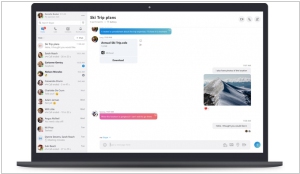
Last year, Skype underwent a vibrant makeover, taking inspiration from Snapchat and incorporating its own version of "stories." However, the redesign faced significant criticism. Microsoft has now acknowledged that the changes did not resonate with users and have decided to adopt a simpler navigation model. In the mobile app, there are only three buttons at the bottom: Chats, Calls, and Contacts, while Highlights and Capture have been removed. The desktop version of Skype has also undergone changes, with Chats, Calls, Contacts, and Notifications now positioned at the top left of the window, aimed at facilitating familiarity for long-time Skype users. Moreover, the app's excessive use of color has been toned down, and a Skype "Classic" blue theme has been introduced, optimized for contrast and readability. These adjustments aim to improve the user experience and address the feedback received from the community.

